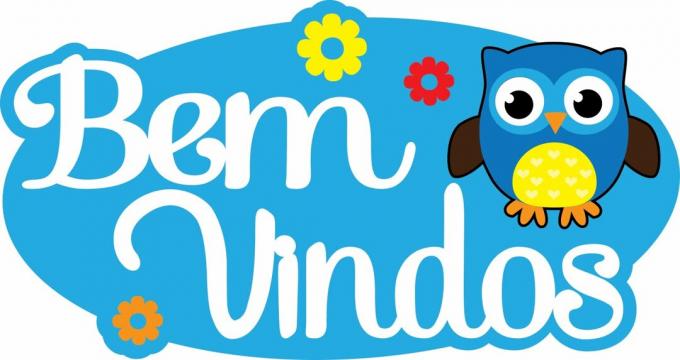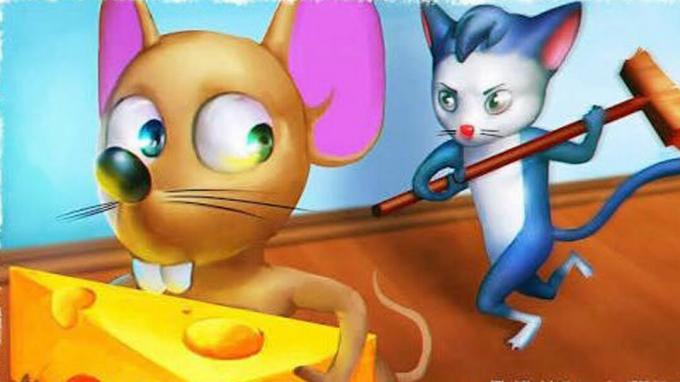We selected in this post some suggestions for games and dynamics for the first day of school (back to school), of the students in the early grades.
The 1st day of class is a day to mingle, get to know the class, promote presentation dynamics so that everyone can get to know each other and thus start the relationship between the students.
We know that the academy trains us, but the professionalization we only acquire with practice, isn't it true? Who never asked. “What will I do with students on the first day of class?” It is a common question and whoever enters the teaching profession will end up going through it.
And it was with this in mind that we organized in this post wonderful tips for games and dynamics for the first day of school, check out:
Index
See too:Back to School Routine for Early Childhood Education
AGE: 8 years onwards
Specific objectives: Develop imagination
MATERIAL: A bottle
LOCATION: Room, patio
Formation: circle
Organization: students in a circle, the teacher in the center.
Execution: the teacher rotates the bottle on the ground and when it stops it will point towards a student. The student must go to the center and perform a task determined by the class or teacher.
AGE: 9 years onwards
Specific Objectives: Emotional Control
MATERIAL: Apple
LOCATION: Court, patio
Formation: ranks
Organization: in rows, with apples hanging in front of them
Execution: at the signal, try to bite the corresponding apple, without holding it, within a specified time. The row with the highest number of points per bite, or the one that bites the apple first, or the one that eats the apple first wins.
AGE: 7 years old
Specific objectives: Attention, listening
MATERIAL: Any object
LOCATION: patio, lawn
Formation: circle
Organization: students in circles. One sitting in the center with eyes blindfolded, which will be the dog. Near you will be an object "the bone"
Execution: given the signal, the teacher will indicate one of the students in the circle who will cautiously try to pick up the bone. Perceiving the noise, the dog will bark and indicate the side of the noise. When setting the direction, the teacher will indicate another student. If one succeeds and is not guessed, take the sales and try to guess.
Tell the class that everyone will get a "picture." Tape a child-sized sheet of Kraft paper to the wall. Position the student so that he is leaning against the sheet and, with a pencil, draw the outline of his body. Encourage the class to tell them about their hair, their face, if they wear glasses, etc. During the activity, repeat the student's name many times so that classmates can memorize it. Make the “picture” of everyone. Finally, ask a classmate to draw your outline, repeating the observation process, so that the children become familiar with you too. Hang the drawings on the wall and praise the group. Over the next few days, at the entrance, ask the class who each of the drawn classmates is and if he is present. If so, you get a round of applause. Leave the papers exposed for a while. It is important for the little ones that their productions stay there until they feel they belong to the group and the environment.
Hide in the living room bags or packages containing different materials that will be part of the children's daily life. It can be, for example, books, games, brush, scissors or some clay. Invite the children to look for the objects in pairs. This already stimulates cooperation between them. Guide the search by saying “hot” if what you're looking for is close, “warm” if it's at medium distance, or “cold” when it's far away. After all the packages are found, ask what activities can be done with the materials and take the opportunity to better explain the function of each one. Show how and where they will be stored, highlighting the importance of keeping the work environment well organized.
Make name tags with the children's names and place them on the living room floor in the middle of a wheel. Ask each person to identify her name. Encourage initial letter recognition, count how many letters make up each name, and make them see the same letters in different names. When everyone has a badge, start a nice chat about their preferences regarding a predetermined topic (such as food, games, objects or places). Group children according to affinities. In the next step, ask students to draw what they like on a piece of paper and name it. Anyone who doesn't know how to write alone can copy the badge. Once ready, the drawings are shown to colleagues and then displayed on the wall. With the literate, the dynamic is the same, but in addition to drawing, they can make a list of their preferences.

Working in pairs:
Group work:
Ask them to be attentive to the presentations, as everyone deserves to be well received.
At the end, share: What would we like to find in this group? End with a handshake and a round of applause to everyone.

In the classroom, gather all the students in the class, give each one a table and start the presentation process.
Materials: Create a PivotTable:
A = open arms
E = arms crossed in front
I = right arm raised
O = oval-shaped arms in front
U = U-shaped arms up high
Observe whether the participants' performance improves with practice and the participants' degree of spontaneity when presenting themselves.
To carry out this dynamic presentation for the first day of class, the teacher must bring together all students or participants in a circle, the movement of chairs and adjustment of the circle will initiate the mingling of the participants.
Materials: A sheet containing the form below:
The. What I like to do the most?
B. What do I least like to do?
ç. A quality of mine is:
d. A defect of mine is:
and. What profession do I want to exercise:
Promote a pleasant and relaxed atmosphere for everyone to introduce themselves.
Observe if the participant has good self-knowledge, how he/she reacts to the responses of his/her colleagues.
Make cardboard squares with pictures of the words you will use in the game, basic things and that have learned in the previous year if you are an English or Spanish teacher, or any object if you are going to play the game in Portuguese. Make the squares of cardstock or any other thick paper in the same student number 1 that you will use.

Put them in a circle (preferably), distribute the cards to the students, asking them not to show each other yet. Start by showing yours and say, in Portuguese, English or Spanish, as appropriate:
– I'm Fulano and I'm a (a) – say the name of the figure that is on your card. A ball, for example.
Randomly appoint a student who will say to you in the game's language:
– You're Fulano and you're a ball, I'm Beltrano and I'm a bicycle.
He should then point out another student, who will look at you and say:
– (pointing to the previous student) He is Beltrano and he is a bicycle, you are So-and-so and he is a ball, I am Sicrano and I am a book.
Each student appointed must say everything that the others have said, pointing out each student and ending always with 'you are Beltrano and you are a ball, I am…. and I am a …
You can put pictures that will look funny as the students speak, and they will have fun while memorizing each other's names. In fact, this dynamic is a good help for you to also learn their names, which is desirable in a teacher, who at least knows the names of his students.
Before you leave, I also recommend other wonderful dynamic suggestions for the first day of class, check it out:
Update:
It can be used both to generate ideas about a particular subject and/or problem as well as to instigate reflection and debate about the best solutions to a given problem, making the group members have to ARGUMENT and DEFEND their opinions.
Sitting in a circle, the teacher will draw a piece of paper and start the dynamic by saying a single word that refers to the chosen theme. Then pass the paper to the student next to him and he must say another word and so on.
So that there are varieties, you cannot say something that has already been mentioned. Each spoken word must be written on the board by the teacher or by the student.
Material:
Formation:
Goals:
Tip:
The teacher will be able to put more papers of the topic to be studied in the class and after everyone participates saying a word he will start a discussion.
The pro and con dynamics are very welcome in this type of activity. The class is divided into two teams and each will have a different position from the other. Each team will develop arguments to explain to the class why they are against or in favor of a particular issue.
_______
Another dynamic for you to work from Elementary II and High School onwards.
It's called Interrogation Dynamics and it can be used not only at the beginning of classes, but also in the during the school year, as it proves to be an excellent pedagogical strategy for the development of contents.
The teacher will choose a student to play the role of the interviewee.
It will not be able to use the words NO, YES and WHY in its arguments.
Colleagues should ask questions that induce the respondent to speak the prohibited words, when he makes a mistake he should pay a gift. Then it passes the turn to another colleague.
I hope you enjoyed Dynamics and started using them in your classroom. Always remember: there are several ways to achieve the pedagogical goals of your planning, and Dynamics are an excellent resource for doing this.
_______

Children form a wheel. One of them, the Rat, is inside the wheel. Another, the Cat is out of the circle.
The Cat asks: "Is your Mouse there?" The children in the circle answer: “No” The Cat asks: “What time does he arrive?” The children respond at a time of their choice.
The children start to rotate and the Cat asks: "What time is it?" and the children respond: "One o'clock" - "What time is it?" – “Two Hours” and so on until reaching the agreed time.
Children on the wheel must stop with arms outstretched; the Cat starts chasing the Mouse.
The game ends when the Cat catches the Mouse. For the very small ones it is preferable that those on the wheel remain stationary until the cat catches the mouse. For older children, those on the wheel can help the mouse to run away or hinder the cat, without breaking the circle.
You can repeat the game a few times, giving a chance to whoever wants to be a mouse and a cat. Try to stop the activity before the children lose interest.
_______
The main objective of this funny dynamic for the classroom is to provide relaxation and integration for the group of students in a fun way.
Materials: Small crumpled paper balls (5 for each student in the class).
Procedure: This dynamic is used to relax and integrate the group in a fun way.
_______
Objective: Favor the spirit of cooperation.
Material: Large room, masking tape, standing students.
Procedures:
Reflection: What is the feeling of those who stayed for the end? And what did you feel when your colleagues started to help you on the crossing? How did you feel helping your colleagues? Promote other reflections.
____
Objective: Make children aware of the importance of taking responsibility.
Material: Open space or large room, enough dark TNT sales for all students.
Procedures: Divide the class into pairs; deliver one sale for each pair; ask them to decide who will be the first to wear the blindfold; explain that the colleague who is blindfolded must be led by his partner, who can give information about the route: stairs, slope, hole…; after a few minutes, reverse roles; at the end, start a reflection on sensations and thoughts that will arise while you were blindfolded later when you were driving your colleague.
Reflection: How would you feel if your driver didn't act with care and responsibility? Let the kids talk.
____

Objective: preserve friendship and develop a moment of relaxation
Materials: Gift box, papers with the names of all participants.
Procedures: Conduct a draw for the secret friend, each person withdraws their own and the facilitator asks each participant to go to the front and give tips for others to correct the name of the secret friend, the tips can be: How many letters is the name, how many vowels, consonants etc. …
When the group gets it right, the friend drawn should get up and give his colleague a hug and the dynamic continues.
Subscribe to our email list and receive interesting information and updates in your email inbox
Thanks for signing up.